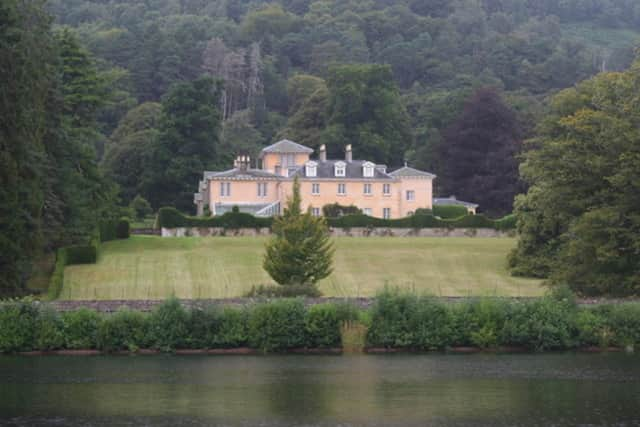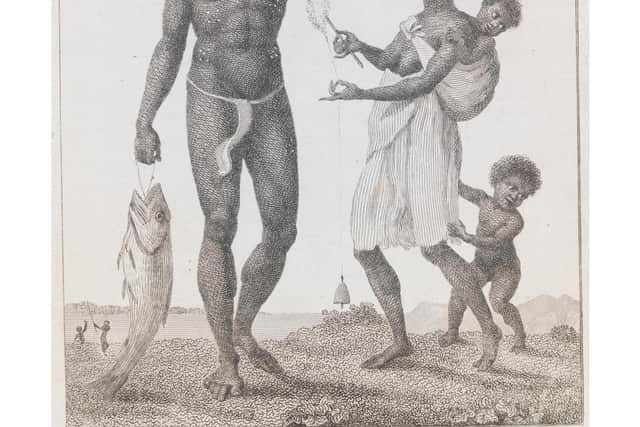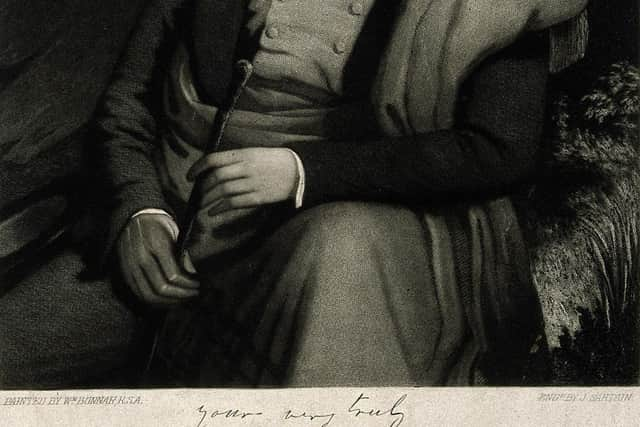Highlands 'haunted' by ghosts of the Caribbean as new book unravels deep links with slavery


Dr David Alston, of Cromarty, has published Slaves and Highlanders, Silenced Histories of Scotland and the Caribbean, with the book the result of more than 20 years of research into the connections between the vast acquisition of wealth in the north and the the human suffering of slaves shipped west from Africa.
From the slave auctioneers and agents to financiers and landowners, Dr Alston unravels a vast, super- organised network of trading that had transportation and sale of slaves as its core – and Highlanders at the controls, in many cases.
Advertisement
Hide AdAdvertisement
Hide AdA slave called Inverness, who escaped from his Highland master in present-day Guyana on the north coast of south America also features, as do the country's place names that come into view one after the other - Alness, Belladrum, Borlum, Cromarty and Dingwall, to name a few.


Back on Highland soil, those who invested in the production of “slave cloth”, which was made from the coarsest of linen and sent to the plantations for clothing, are examined, as are the vast exports of salted herring, a staple of the plantation diet.
The research of Dr Alston, a former museum curator and Highland councillor, began in the 1990s after coming across an account of writer and geologist Hugh Miller who, when aged 16, stabbed a black teenage boy in a fight after school in Cromarty in 1818.
Dr Alston started to unravel Miller’s personal family links to Berbice, now part of Guyana, where Highlanders had made early inroads when it was still a Dutch colony. A web of local investors, tradesmen and professionals who headed to the Caribbean started to emerge, as did account of fathers of children born to enslaved women, some whom were brought back to the Highlands to be educated.


“I came to feel that Cromarty was haunted, not just by a black teenager, but by many ghosts of the Caribbean and beyond, half-glimpsed figures who flitted on the edges of the conventional view of the town’s past. In many part’s of the Caribbean, they call these ghosts jumbies.” Dr Alston wrote.
At the time, there was little, or no acknowledgement from professional historians that Scotland “let alone the Highlands” had any significant involvement with slavery, with bestselling books on Scottish history offering a “catalogue of silence”, Dr Alston said.
But as he pursued his research, accounts of figures such as Sea Captain James Fraser, whose family hailed from Glenconvith near Inverness, materialised.
Fraser captained 16 slave voyages from Africa to the Americas, transporting some 5,513 enslaved people. Around 540 of them died. The conditions on two of his boats - the Tartar and the Emilia – became key supporting evidence for abolitionists.


Advertisement
Hide AdAdvertisement
Hide AdSurgeon and abolitionist Alexandra Falconbridge, who earlier served on both ships and one other, wrote an account of his experiences. No ships are named but rape, death and suicide on board are reported, as well as poor food, water shortages and slaves having “less space than a coffin”.
Fraser denied he figured in Falconbridge’s account of “glowing hot” coals being placed at the lips of slaves in order to force them to eat.
But he admitted to ordering one slave to be presented with a piece of yam in one hand and a fire in the other in order to force him to take food, which he did.
Fraser’s cousin, Evan Baillie of Dochfour – ‘one of the richest commoners in Britain’ – owned a number of estates in St Kitts and, in 1770, joined his brothers’ merchant company which had a reputation for the poor health of the slaves it traded.


An earlier study of 850 slaves on the Mountravers plantation in Nevis found that 30 were bought from the company in 1766. They included Judy, 12, who was earmarked as a mistress and Daniel, who was described as a “refuse boy” given he was unlikely to survive. Dorchester and Cordelia died from eating dirt.
Scots are, overall, considered to have benefited disproportionately from slavery and received 15-16 per cent of the compensation paid by the British Government following abolition.
Separate research last year found 63 estates in the West Highlands and Islands were bought by beneficiaries of ‘slave derived wealth’, with the majority changing hands between 1790 and 1855.
This land covered around 1.2m acres – or around one third of the West Highlands and Islands, with a “substantial minority” of landowners having existing ties to the region.
Advertisement
Hide AdAdvertisement
Hide AdThe reason why Highlanders sought wealth in the plantations to such an extent was partly due to a “willingness to take risks”, Dr Alston said.
He said: "It is partly due to the nature of Highland and Scottish society, Scotland being a poorer country and the Highlands being a poorer part of that country, where the position of people in the upper and middle classes was always vulnerable.


"Every generation thought ‘what do we have to do to maintain this position?’. People were more willing to take risks. Looking for opportunities abroad was part of that and people looked to the army, to the East India Company and the Caribbean.”
Dr Alston said he was driven by a “sense of responsibility and a sense of injustice that has been silenced for so long”.
He added: "People have an interest in silencing it because it helps feed other narratives of the Scottish as victims, Highlanders as victims, the view that Scotland is a colony. Historians don’t have that view, but it is a surprisingly common view in Scotland.
“Sometimes these stories are often not obvious, you have to dig to find them and there is still a huge amount of work to do at a local level to find where these ghosts are – and where the quiet voices are that you need to hear.”
-Slaves and Highlanders, Silenced Histories of Scotland and the Caribbean, is published by Edinburgh University Press and available on October 1.
